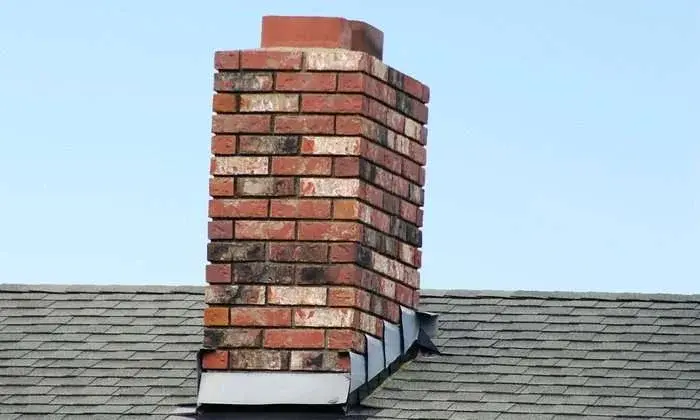Your chimney is a vital component of your home's heating system, but it's often overlooked when it comes to regular maintenance. Understanding the importance of chimney cleaning and what's involved in the process can help you protect your home, ensure your family's safety, and maintain the efficiency of your heating system.
Whether you're a new homeowner with a fireplace or you've been enjoying cozy fires for years, this comprehensive guide will help you understand everything you need to know about chimney cleaning – from why it's necessary to what you can expect during a professional cleaning service.
Why Chimney Cleaning is Essential
Creosote Buildup
When you burn wood in your fireplace, it produces creosote – a dark, tar-like substance that adheres to the interior walls of your chimney. Creosote is highly flammable and is the leading cause of chimney fires. There are three stages of creosote buildup:
- Stage 1: Light, flaky deposits that are relatively easy to remove
- Stage 2: Tar-like deposits that are harder and more difficult to remove
- Stage 3: Hardened, glazed deposits that are extremely difficult to remove and highly dangerous
Blockages and Obstructions
Chimneys can become blocked by various materials including leaves, twigs, animal nests, or even animals themselves. These blockages prevent proper ventilation and can cause dangerous gases like carbon monoxide to back up into your home.
Birds, squirrels, and other small animals often see chimneys as ideal nesting spots, especially during spring and summer months when fireplaces aren't in use.
Structural Damage
Over time, the acidic byproducts of combustion can damage your chimney's interior structure. Regular cleaning allows professionals to identify and address structural issues before they become major problems.
How Often Should You Clean Your Chimney?
The frequency of chimney cleaning depends on several factors:
Usage Frequency
- Heavy use (daily during heating season): Clean annually or after every cord of wood burned
- Moderate use (weekends and evenings): Clean annually
- Light use (occasional fires): Clean every 2-3 years or as recommended by inspection
Type of Fuel
- Wood-burning fireplaces: Require more frequent cleaning due to creosote buildup
- Gas fireplaces: Need less frequent cleaning but still require annual inspection
- Oil heating systems: Should be cleaned annually
Professional Recommendations
The National Fire Protection Association (NFPA) recommends that chimneys be inspected at least once a year and cleaned as necessary. Even if you don't use your fireplace regularly, annual inspection is important to check for animal intrusion, structural damage, or other issues.
What to Expect During Professional Cleaning
Pre-Cleaning Inspection
Before cleaning begins, a professional technician will conduct a thorough inspection of your chimney system. This includes checking the chimney cap, spark arrestor, damper, smoke chamber, and flue liner for any signs of damage or wear.
The technician will also assess the level of creosote buildup and identify any blockages or obstructions that need to be removed.
Preparation and Protection
Professional chimney cleaners take extensive measures to protect your home during the cleaning process:
- Laying down protective drop cloths and plastic sheeting
- Sealing off the fireplace opening to prevent dust and debris from entering your home
- Using high-powered vacuum systems to contain dust and particles
- Wearing protective equipment and using proper safety procedures
The Cleaning Process
The actual cleaning process typically involves:
- Brushing: Using specialized brushes to scrub creosote and debris from chimney walls
- Vacuuming: Removing loosened debris and particles with powerful vacuum systems
- Smoke chamber cleaning: Cleaning the smoke chamber and damper area
- Firebox cleaning: Removing ash, debris, and buildup from the firebox
- Cap and screen cleaning: Cleaning the chimney cap and spark arrestor screen
Post-Cleaning Inspection
After cleaning, the technician will conduct another inspection to ensure all debris has been removed and to identify any issues that may need attention. You'll receive a detailed report of the cleaning and any recommendations for repairs or maintenance.
Signs Your Chimney Needs Cleaning
Watch for these warning signs that indicate your chimney needs professional attention:
- White staining (efflorescence) on the exterior chimney
- Rust on the damper or firebox
- Damaged chimney crown or cap
- Smoke entering your room instead of going up the chimney
- Strong odors coming from the fireplace
- Animals or birds in the chimney
- Visible creosote buildup (black, tar-like substance)
- Damaged or missing mortar joints
Choosing a Professional Chimney Cleaning Service
When selecting a chimney cleaning service, consider these important factors:
- Certification: Look for technicians certified by the Chimney Safety Institute of America (CSIA)
- Insurance: Ensure the company carries liability insurance and workers' compensation
- Experience: Choose a company with a proven track record and positive customer reviews
- Comprehensive service: Select a service that includes both cleaning and inspection
- Transparent pricing: Get detailed estimates and avoid companies that quote unusually low prices
Conclusion
Regular chimney cleaning is essential for the safety, efficiency, and longevity of your chimney system. By understanding what's involved in the process and working with qualified professionals, you can ensure that your fireplace continues to provide warmth and comfort for years to come.
Don't wait until problems arise – schedule regular chimney cleaning and inspection to protect your home and family. Remember that chimney maintenance is an investment in your home's safety and value.
For professional chimney cleaning services in Falls Church, VA, contact TJK Air Duct Cleaning. Our certified technicians provide comprehensive chimney cleaning and inspection services to keep your chimney operating safely and efficiently. Call us today at (571) 800-8070 to schedule your chimney cleaning and ensure your home's safety.
